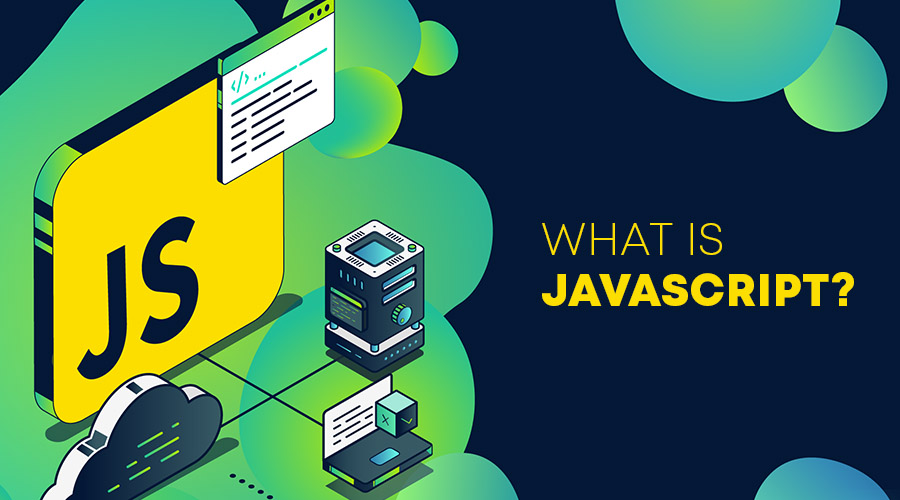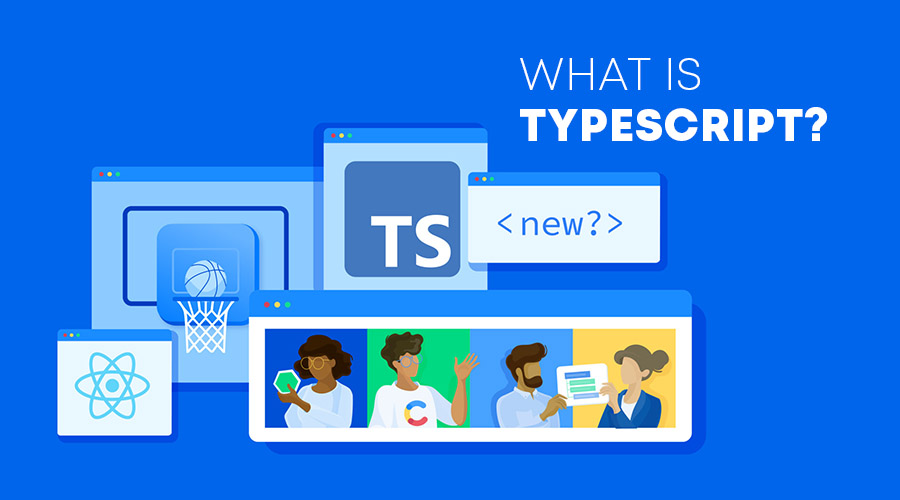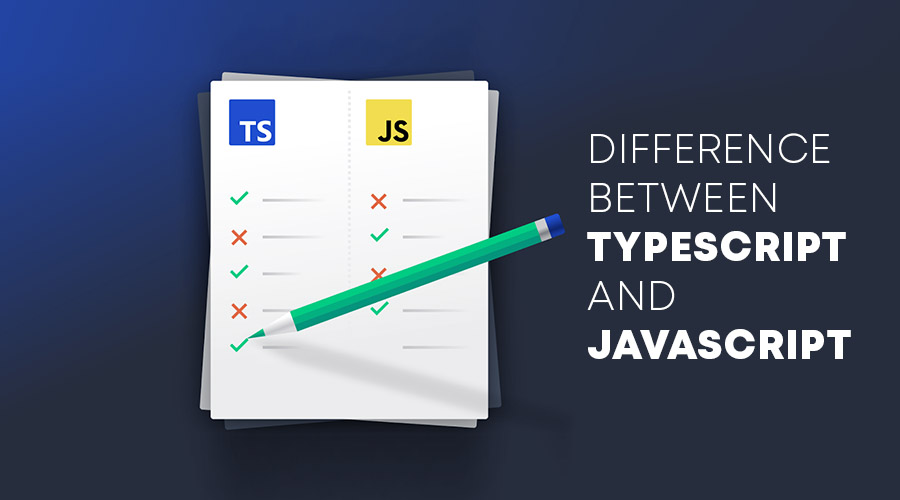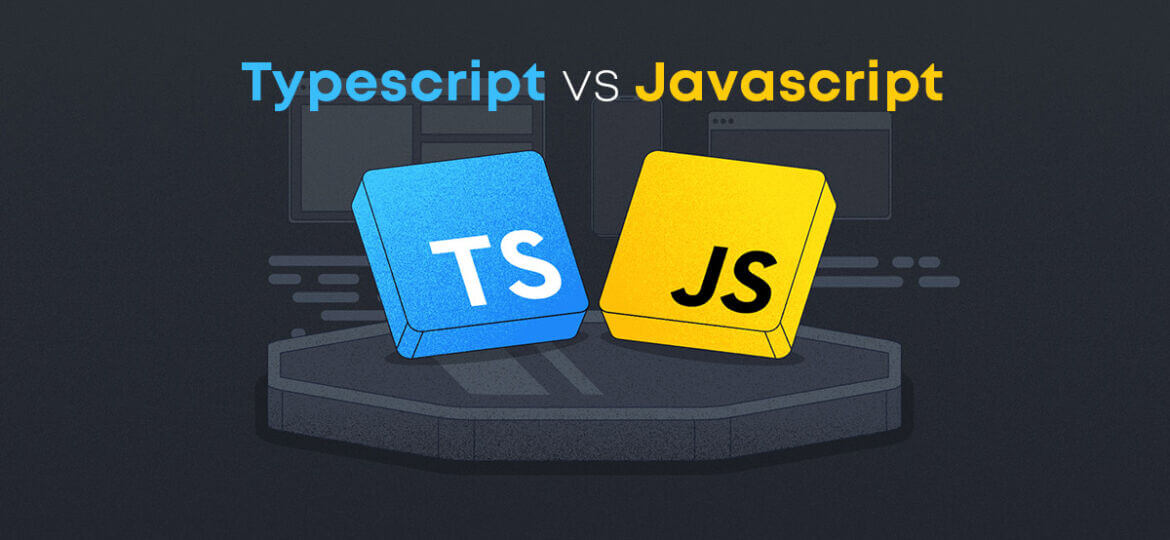JavaScript vs TypeScript in 2025: What’s Best for Mobile App and Web Development?
Introduction: Choosing the Right Language for Scalable Development
In 2025, both JavaScript and TypeScript remain foundational for web and mobile app development. While JavaScript powers dynamic, real-time applications across the web, TypeScript is gaining rapid popularity due to its strong typing, robust tooling, and developer-friendly syntax. Businesses and developers building cross-platform apps for Android and iOS must understand the key differences between these two languages to make the best choice for long-term scalability and success.
What is JavaScript?
JavaScript is a dynamic, interpreted scripting language used to build responsive websites, web apps, and hybrid mobile applications. It’s one of the core technologies of the web, along with HTML and CSS. JavaScript supports rapid prototyping, has a vast ecosystem, and integrates well with front-end frameworks like React, Vue, and Angular. Many Android and iOS applications built with frameworks such as React Native or Ionic are primarily powered by JavaScript.
What is TypeScript?
TypeScript is a statically typed superset of JavaScript developed by Microsoft. It compiles down to standard JavaScript but introduces features like static type checking, interfaces, enums, and advanced tooling. TypeScript helps developers catch errors early during development, making it ideal for large-scale, enterprise-level mobile and web applications where maintainability and team collaboration are critical.
JavaScript vs TypeScript: Key Differences in 2025
| Criteria | JavaScript | TypeScript |
|---|---|---|
| Type System | Dynamic | Static |
| Learning Curve | Easier for beginners | Requires prior JavaScript knowledge |
| Code Readability | Can be ambiguous | Strongly typed, easier to manage in teams |
| Compilation | Not required | Compiles to JavaScript before deployment |
| Error Detection | At runtime | At compile-time |
| Popularity for Large Projects | Less preferred | Highly preferred |
| IDE Support | Moderate | Excellent with features like IntelliSense |
| Mobile App Compatibility | Fully supported | Fully supported via React Native, Ionic |
| Developer Productivity | High for small tasks | High for complex or team-based development |
When to Use JavaScript
For quick prototypes or MVPs
When time-to-market is critical
For simple or single-developer projects
If dynamic typing and flexibility are preferred
When to Use TypeScript
For enterprise-level web or mobile applications
For apps requiring long-term maintenance
When working in large development teams
For building Android and iOS apps with strong typing and reusable components
2025 Trends Shaping JavaScript and TypeScript Development
TypeScript as the default choice in new enterprise mobile and web projects.
Cross-platform mobile development using frameworks like React Native is increasingly TypeScript-first.
AI-driven developer tools offer stronger integration with TypeScript for auto-completion, bug detection, and refactoring.
Edge computing and microservices are driving the use of statically typed languages for better code reliability.
Server-side rendering and SEO optimization now favor TypeScript for predictable structure and faster development cycles.
Mobile App Relevance in the JavaScript vs TypeScript Debate
In the world of Android and iOS development, both JavaScript and TypeScript are widely used with frameworks like React Native, Ionic, and NativeScript. However, TypeScript provides better tooling, compile-time validation, and cleaner architecture—making it the preferred choice for enterprise-grade mobile apps in 2025.
For example, an Android fitness app or an iOS-based eCommerce platform built in TypeScript is less prone to bugs and easier to maintain compared to a similar app built in plain JavaScript. Businesses building B2C or B2B mobile apps in the U.S. are increasingly hiring TypeScript developers to future-proof their codebases.
SEO Best Practices for JavaScript and TypeScript Projects
Use static site generation or server-side rendering to ensure content is crawlable.
Implement schema markup for app-related data (especially for mobile landing pages).
Optimize code for mobile speed, especially when using JavaScript-heavy frameworks.
Structure content and app documentation using proper headings, metadata, and semantic tags.
Publish expert-authored tutorials and case studies to demonstrate authority (important for E-E-A-T).
Google E-E-A-T and Code-Based Content
E-E-A-T (Experience, Expertise, Authoritativeness, and Trustworthiness) is especially relevant for technical blogs and documentation. To align with it:
Ensure content is written or reviewed by experienced developers.
Include clear bylines and about-the-author sections.
Offer trustworthy, error-free explanations.
Reference real-world mobile and web development use cases.
Use visual aids like architecture diagrams, app screenshots, or sample code snippets.
You are going to learn the Typescript vs JavaScript analysis and know which one is suitable for your next web development process.
Internet widely uses JavaScript. JavaScript has been on the market for many years and has grown to be a popular programming language among developers. It has served as the gateway programming language for many as the most popular scripting language for many online applications.
However, it is not the only one of its sort. With TypeScript’s growing popularity, we may consider it an upgraded version of JavaScript with more functionality.
The majority of large applications are suitable for TypeScript, an open-source programming language– the main difference between Typescript and Javascript. Microsoft built it in 2012, primarily to manage large applications.
What Is JavaScript?

JavaScript, created by Netscape in partnership with Sun Microsystems, is one of the most ubiquitous fundamental web technologies. JavaScript is a scripting language for creating interactive web pages. It follows client-side programming standards, meaning it operates in the user’s web browser without requiring any resources from the webserver. It’s a high-level language with a JIT compiler and dynamic typing. For a long time, JS was solely for client-side, although several modern JS engines also feature server-side equivalents. The syntax of JS and the native libraries are both comparable to Java. JS is the greatest programming language to grasp as a beginner.
The goal of creating this script is to make it a supplementary scripting language in the same way that Visual Basic was to C++ in Microsoft’s language family. JavaScript was mainly for apps with less than a few hundred code lines.
What Is TypeScript?

TypeScript is a JavaScript programming language from the modern decade. All of your JavaScript code is valid in TypeScript, which implies TypeScript is a superset of JavaScript — it’s just JavaScript with extra capabilities. It is a dynamic language for writing concise JavaScript code. When we examine Typescript vs Node.js, it may be executed on Node.js or any browser that endorses ECMAScript 3 or the latest versions.
TypeScript, like JavaScript, serves the same goal but is suited for building complex apps. JavaScript is compiled from TypeScript.It is structured as an object-oriented programming language and supports concepts such as interfaces, inheritances, namespaces, and classes. Type annotations enable static typing in TypeScript.
TypeScript is a highly typed language. This allows for easier debugging, which is a far more effective method of coding for large projects. TypeScript programs, like any other full-fledged programming language, are made up of sections, features, variables, remarks, phrases, and statements. When the code gets large, difficult to manage, and prone to mistakes, this is where TypeScript comes in handy.
Difference Between TypeScript And JavaScript
TypeScript is a JavaScript superset designed to reduce code complexity in large applications. Java is a programming language that aids in the creation of dynamic web page content. JavaScript is an object-oriented programming language, whereas TypeScript is a scripting language. Static typing is a TypeScript feature, however, JavaScript does not support it. TypeScript supports interfaces, while JavaScript does not. The powerful and user-friendly programming language for huge applications is TS vs JS is sleek and tidy, making it ideal for small web applications.
Why Was Typescript Developed Despite Having Javascript?
JavaScript is extended by TypeScript. It covers all JavaScript features as well as advanced features. The use of JavaScript practically everywhere necessitates the use of TypeScript. JavaScript is no longer restricted to the client-side; it is utilized practically everywhere, including outside of browsers. JavaScript is used by almost 90% of websites, mobile applications, and many other programs. However, when consumers began to utilize JavaScript, developers recognized that it could also be used as a server-side programming language. However, as JavaScript grew in popularity, the code got more intricate and complex.
TypeScript was swiftly gaining popularity and a significant number of businesses were using it. There are several resources for learning TypeScript, and developers may readily obtain help from the TypeScript community. It is not as huge as the JavaScript community. The present JavaScript ecosystem includes several platforms, modules, and code practices, rendering it one of the largest development communities.
Browsers cannot natively comprehend TypeScript code with top frontend frameworks. As a result, if the code was written in TypeScript, it is translated and transformed to JavaScript. This is referred to as trans-piled. Browsers can read and display the code with the aid of JavaScript code. Developers may employ TypeScript to reuse existing JavaScript code, include popular JavaScript libraries, or call the TS Code from native JavaScript code.
Features Of TypeScript
Portable
TypeScript is portable in the sense that it may run on any browser, device, or operating system. It may be executed in any environment that supports JavaScript. Its execution is not limited to any virtual machine.
Cross-Platform
TypeScript is compatible with any platform that supports JavaScript. The TypeScript compiler is compatible with all operating systems, including Windows, macOS, and Linux.
JavaScript libraries
They are supported by TypeScript, as are all JavaScript components. It enables developers to utilize current JavaScript code in conjunction with TypeScript. We can simply use most of the JavaScript frameworks, modules, and other resources in this context.
Static type-checking is used in TypeScript
This is accomplished through the use of type annotations. It aids type checking during compilation. As a result, you may identify mistakes while typing the code rather than executing your script every time. Furthermore, if a variable is defined without a type, its type will be deduced depending on its value using the type inference method.
Typescript Vs JavaScript: Why Do You Need TypeScript?
TypeScript is a free and open-source programming language that streamlines JavaScript code, allowing us to understand and debug. It offers extremely productive developer tools for JavaScript IDEs as well as techniques such as static checking. TypeScript simplifies the reading and understanding of code. With it, we can vastly improve on ordinary JavaScript. TypeScript provides all of the benefits of ES6, plus increased efficiency. By type verifying the code, TypeScript can help us avoid nasty problems that developers frequently encounter when creating JavaScript. It is little more than JavaScript with some extra features. TypeScript is structural, not nominal, and its code is in accordance with the ES5 and ES6 standards to support the most recent browsers. It is compatible with ECMAScript and will focus on saving developers time.
Main Difference Between JavaScript And TypeScript

There are numerous similarities between TypeScript and JavaScript. Both are used to build interactive web pages. TypeScript is a JavaScript specialized version designed to reduce code complexity in big, complicated applications. JavaScript is a programming language that may be used to create dynamic web page content. However, when TypeScript vs JavaScript is compared, JavaScript is a lightweight, processed, dynamic language for web design. It is used to supplement HTML web pages in bespoke web app development.
Other Differences Between Typescript Vs JavaScript
Learning curve
The learning curve for TypeScript is steep. It also necessitates scripting knowledge. JavaScript is a simple and versatile language for creating web scripts.
Data Binding
TypeScript defines the data by used using notions like interfaces and forms. JavaScript does not support such a concept.
TS vs JS- Typing
JavaScript is typing is loose, it is more adaptable for individuals or small teams, TypeScript has optional static typing, which can assist catch problems during writing, making it ideal for big team collaboration. TypeScript is also useful for scalability in web applications.
Ecosystem
The Ecosystem is extremely strong and user-friendly. Thus, it enables you to statically type expressive JavaScript features such as union types, intersections, and discriminating unions. JavaScript allows you to investigate and develop code without having to compile it first.
When To Choose JavaScript?
Developing online and mobile applications
Developers may use JavaScript frameworks to create online and mobile apps. They are compilations of JavaScript code libraries that give developers pre-written code to employ for everyday programming functions and tasks—essentially, a framework around which to create websites or online apps.
Including interactive features on web pages
Users can communicate with web pages using JavaScript. When you want to show or conceal more data with the touch of a button, there are essentially no boundaries to what you can do with JavaScript on a web page when the mouse lingers over a button, change its color; on the site, scroll through a picture carousel, when zooming in or out on a picture, displaying animations and streaming music and video on a web page. Game development: Java can be useful to make web games. It is an excellent approach for new developers to hone their JavaScript abilities.
When To Choose TypeScript?
When team members were accustomed to statistical language: If you or the majority of your team come from a statically typed language such as C# or Java and don’t want to commit to JavaScript, TypeScript is a viable option. Even if you have a strong understanding of Java, you can use TypeScript without knowing JavaScript.
TypeScript recommended framework
Use TypeScript if you’re using Angular 2 or a similar library that promotes it. Just keep in mind that, while TypeScript can access any JavaScript libraries out of the box, you’ll need to provide the type definitions for those libraries outside if you want acceptable syntax errors.
Large codebase
When your codebase is large and several people work on the project, a type system would help you prevent many typical errors. This is particularly true for one-page apps. It’s typically a good idea to have some form of safety mechanism in place whenever one developer may propose breaking modifications. The TypeScript transpiler highlights the most obvious errors.
When To Choose Typescript Over Javascript?
TypeScript is more trustworthy
TypeScript code is more dependable and simpler to modify than JavaScript code. This makes it considerably easier for developers to avoid mistakes and change code. Types invalidate the majority of the foolish errors that may creep into JavaScript codebases, and they enable a speedy feedback loop to remedy all of the little issues that occur when developing new code and debugging.
They are interchangeable
As JavaScript is a subset of TypeScript, you may utilize any JavaScript library or code in your TypeScript project. Since most popular JavaScript libraries feature types, you can progressively incorporate TypeScript into your JavaScript codebase by first adding types to particular modules and then extending them.
TypeScript is more specific
Attempting to make types clear concentrates our emphasis on how the structuring of our system takes place and how its many components interact with one another. It is critical in large-scale systems to be able to separate away from the parts of the network while maintaining the background in mind. typescript allows us to do so.
Large codebase
Attempting to make types clear concentrates our emphasis on how the structuring of our system takes place and how its many components interact with one another. It is critical in large-scale systems to be able to separate away from the parts of the network while maintaining the background in mind. typescript allows us to do so.
What Should I Learn? Typescript Vs JavaScript
If you’re completely unfamiliar with the domain of programming, you should definitely start with JavaScript. Note that TypeScript extends JavaScript, so start off small and gradually build up. You’re ready to tackle TypeScript once you’ve mastered JavaScript. TypeScript is a must-have if you want to be more competitive as a web developer, especially if you want to work on large, complicated projects. It will assist you in detecting issues prior to runtime and building apps faster than JavaScript alone.
In The End: Which One Is Better? Typescript Vs JavaScript
JavaScript has been the most common programming language for many years, but TypeScript’s usage has grown significantly since 2017 which raised the question: will TypeScript replace JavaScript? The scope of the project is an essential aspect to examine. TypeScript does not stand out and may not be worth the hassle for smaller applications. In this scenario, JavaScript may be more useful because it is portable and lightweight. TypeScript is the chosen language for medium and big applications. First, it is easier to restructure code in TypeScript. Second, TS depends more on clear types, allowing developers and teams to better grasp how the various elements interact. Lastly, TypeScript detects flaws and other issues during compilation, which improves efficiency while working on large-scale projects.
Conclusion
When your team is fresh and working on tiny web projects, JavaScript is suitable. TypeScript is an excellent choice if you have a workforce with strong skills and understanding and need them to tackle a big project. JavaScript is a fantastic language; otherwise, it would not have been the most popular for so long. However, this does not imply that it is flawless. When dealing with larger projects, JavaScript may get complex. As a result, Microsoft created TypeScript. TypeScript is just JavaScript with the potential to scale. The key difference between them is that TypeScript typing is static whereas JavaScript is not. Furthermore, unlike JS, TS helps in handling larger projects. The differences between TypeScript and JavaScript are not as numerous as you would expect, although they are important. You may contact Echo Innovate IT, a leading front-end development company, and arrange a free consultation to discover how to select the best technology and language for your project specifications.
FAQs Of Typescript Vs JavaScript
Is TypeScript simpler to learn than JavaScript?
The levels of complexity are identical. There are several situations when TypeScript and JavaScript may be more difficult to understand.
JavaScript vs TypeScript, what is used at Google?
Google’s Angular web application framework uses TypeScript. Google Analytics is an instance of a TypeScript-enabled product.
Is it better to learn JavaScript vs TypeScript?
For total newbies, JavaScript is certainly the better option. As previously stated, TypeScript is only a subset of JavaScript. JS may be a better option because it is more prominent and may result in even more job prospects to start with.
Which is better for mobile app development—TypeScript or JavaScript?
TypeScript is better for large, scalable Android/iOS apps due to its static typing and better code maintenance.
Can I use both JavaScript and TypeScript in one project?
Yes, TypeScript is a superset of JavaScript and allows gradual migration.
How does TypeScript improve collaboration in development teams?
By enforcing type safety and better documentation, making it easier for teams to understand and maintain code.
Are TypeScript apps faster than JavaScript apps?
Not necessarily at runtime, but the development experience is faster due to fewer bugs and better tooling.
Is TypeScript more secure than JavaScript?
It reduces common coding errors that can lead to security flaws, but both require best practices for true security.
What IDEs support TypeScript development?
VS Code, WebStorm, and many others offer powerful TypeScript integrations like IntelliSense and error checking.
Is TypeScript harder to learn than JavaScript?
TypeScript has a steeper learning curve but becomes easier over time, especially for developers with object-oriented experience.
Will TypeScript replace JavaScript?
No, but it will continue to dominate in enterprise and mobile app development environments where code quality is essential.



